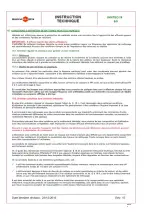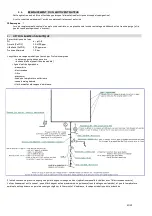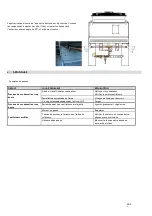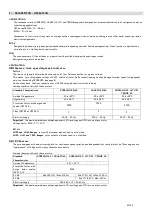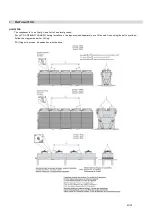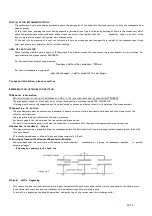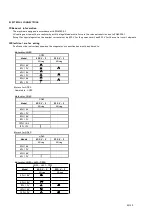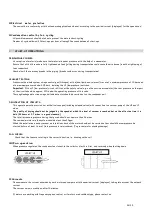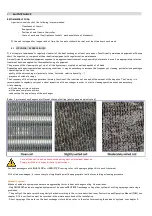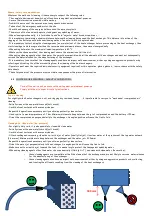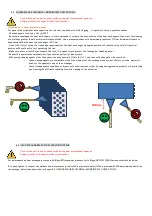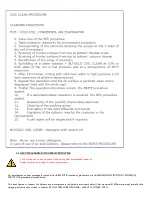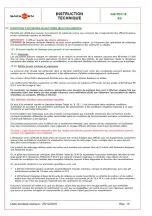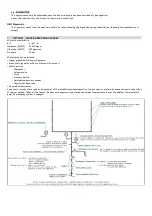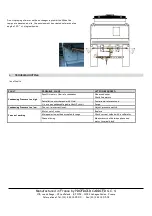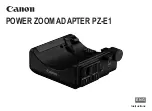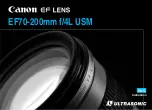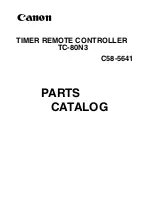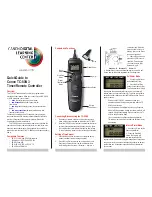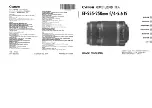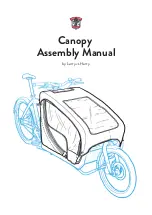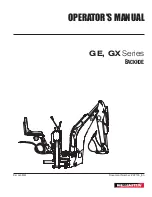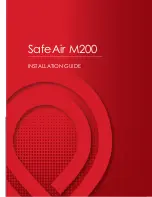
General safety recommendations
Whatever the method of cleaning, it is necessary to respect the following rules:
- The complete device must be switched off and secured against unintentional power-on.
- Secure the intervention area with visible markup.
- Prohibit the access of the secured area to any unauthorized person.
- Take note of the emergency numbers for the site.
- Check the adequacy of the energies delivered and the necessary tools.
- The motors of the fans must be protected against any splashing of water.
- When cleaning mechanically, it is forbidden to use "hard" objects: metal brush, screwdriver, ...
- It is mandatory to maintain a minimum distance between the cleaning devices and the heat exchanger. This distance is function of the
clogging of the battery and the chosen cleaning method. See details in the chapters below.
- It is mandatory to start using the cleaning means (air or water) out of the heat exchanger before proceeding on the heat exchanger, then
start cleaning at a distance greater than the recommended minimum distance, then move closer gradually.
- When using hot water, the maximum allowed temperature is 80 ° C.
- Whatever the chosen method, the cleaning must ensure the elimination of all the dirt.
- When using cleaning agents other than water, they must be compatible with all the elements of the exchanger and must not subsequently
corrode the materials used for the manufacturing of the exchanger.
- It is mandatory to ensure that the cleaning agents used have no impact on the environment, either by using non-aggressive products or by
collecting and treating the effluents resulting from the cleaning of the heat exchangers.
- Operators must wear the required individual security equipment required for this operation: gloves, glasses,… in accordance with the safety
data sheets
- The safety sheets of the products must be visible to anyone near the place of intervention
4.2
LOW PRESSURE CLEANING – SLIGHTLY SOILED COILS
Turn off the entire unit, and secure the unit against unintentional power-on.
Comply with the site's specific safety instructions.
Dry air cleaning
For slightly soiled heat exchangers: dust, non-clogging dry residues, leaves, ..., it is preferable to carry out a "mech compressed air"
cleaning:
- Initially clean with a non-metallic brush (soft brush).
- Suck the front surfaces with a vacuum cleaner.
- Repeat this operation as necessary until you obtain a perfectly clean surface.
- Use dry air at a maximum pressure of 7 bar. Minimum distance to keep between the jet of compressed air and the battery = 150mm.
- Orient the compressed air perpendicularly to the exchanger. An angled position will cause the fins to fold.
Cleaning with clean water (low pressure)
- For slightly dirty coils, it is also possible to clean with clean water.
- Initially clean with a non-metallic brush (soft brush).
- Suck the front surfaces with a vacuum cleaner.
- After brushing and vacuuming, clean the coil with a jet of water (ideally flat jet). Use clear water at the pressure of the tap water network
(3 bar max). Minimum distance to keep between the exchanger and the water jet = 400mmm.
- Repeat this operation as necessary until you obtain a perfectly clean surface.
- Orient the water jet perpendicularly to the exchanger. An angled position will cause the fins to fold.
- Make sure not to orient the jet towards the fans, it is mandatory to protect the fans against splashing water.
- When using cleaning agents other than water, choose a neutral pH fluid (pH = 7), and rinse with clean water. Be sure that:
o
these cleaning agents are compatible with all the elements of the exchanger and are not likely to corrode materials used
for the manufacturing of the exchanger
o
these cleaning agents used have no impact on the environment, either by using non-aggressive products or by collecting
and treating the effluents resulting from the cleaning of the heat exchangers
400 mm
Summary of Contents for ADAGIO 50
Page 17: ...20 3 5 ...
Page 29: ......






